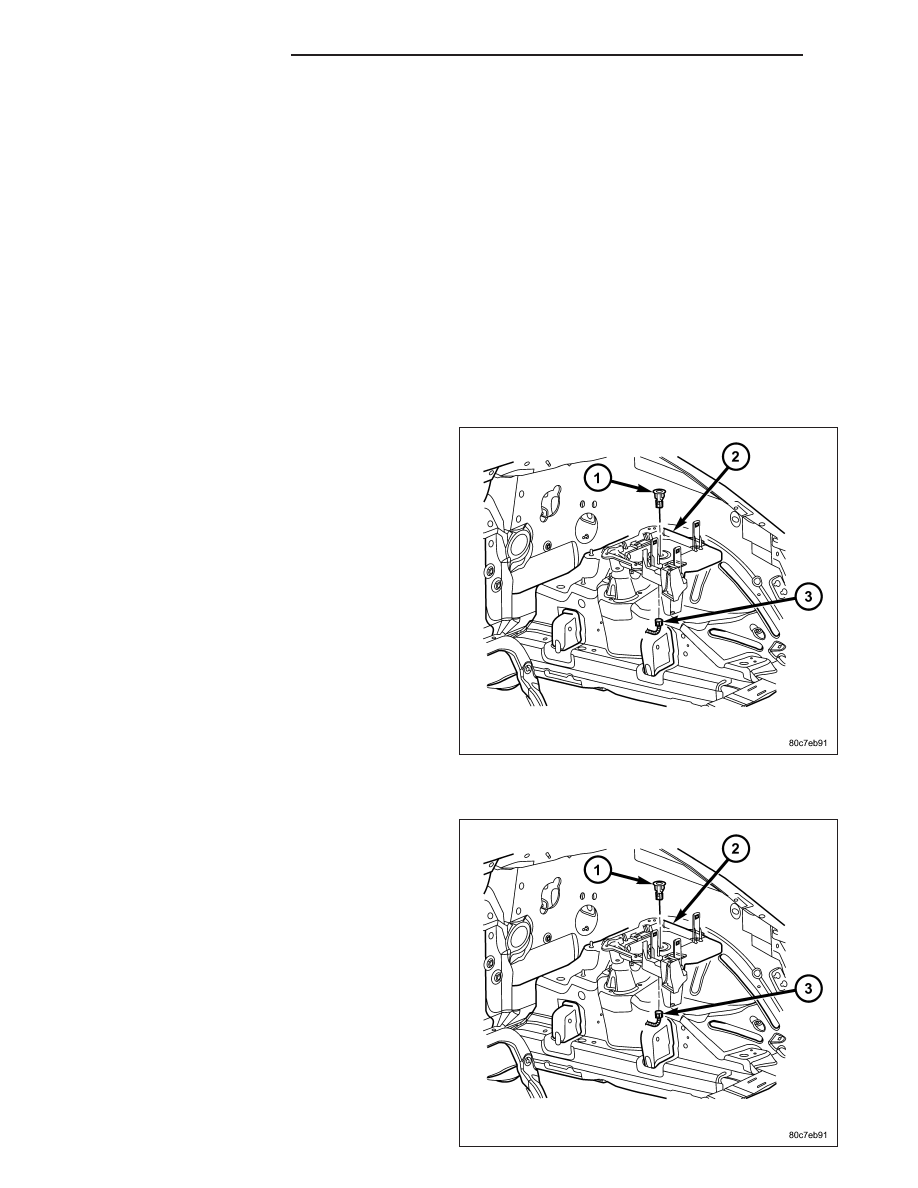Content .. 1496 1497 1498 1499 ..
Jeep Liberty KJ. Manual - part 1498

SENSOR - BATTERY TEMPERATURE
DESCRIPTION
The Battery Temperature Sensor (BTS) is attached to the battery tray located under the battery.
OPERATION
The BTS is used to determine the battery temperature and control battery charging rate. This temperature data,
along with data from monitored line voltage, is used by the PCM to vary the battery charging rate. System voltage
will be higher at colder temperatures and is gradually reduced at warmer temperatures.
The PCM sends 5 volts to the sensor and is grounded through the sensor return line. As temperature increases,
resistance in the sensor decreases and the detection voltage at the PCM increases.
The BTS is also used for OBD II diagnostics. Certain faults and OBD II monitors are either enabled or disabled,
depending upon BTS input (for example, disable purge and enable Leak Detection Pump (LDP) and O2 sensor
heater tests). Most OBD II monitors are disabled below 20° F (-7° C).
REMOVAL
The battery temperature sensor (1) is located under
the vehicle battery and is attached to a mounting hole
on battery tray.
1. Remove battery. Refer to 8, Battery for procedures.
2. Disconnect sensor pigtail harness from engine wire
harness electrical connector.
3. Pry sensor straight up from battery tray mounting
hole.
INSTALLATION
The battery temperature sensor (1) is located under
vehicle battery and is attached to a mounting hole on
battery tray.
1. Feed pigtail harness through hole in top of battery
tray and press sensor into top of battery tray.
2. Connect pigtail harness.
3. Install battery. Refer to 8, Battery for procedures.
8F - 30
CHARGING SYSTEM
KJ